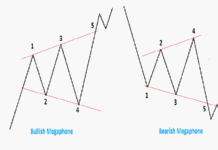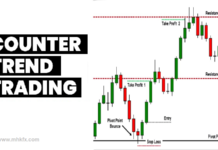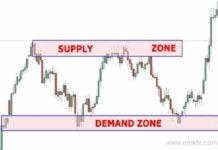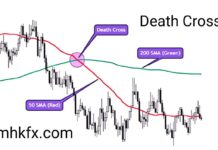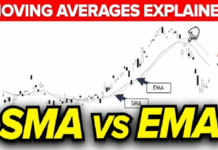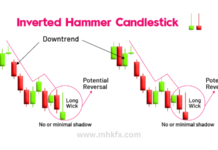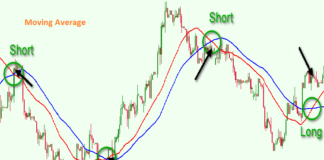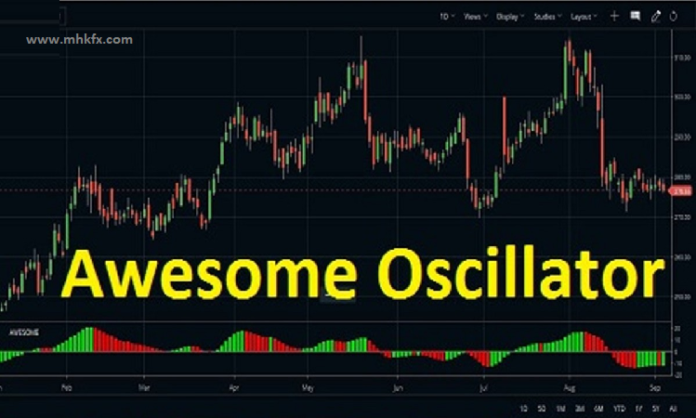
In the dynamic world of financial markets, successful trading demands a comprehensive understanding of market momentum. One tool that has gained popularity among traders and analysts for assessing momentum is the “Awesome Oscillator.” This indicator, developed by Bill Williams, is designed to help traders identify trends, potential reversals, and entry/exit points in various financial markets. In this article, we will delve into the workings of the Awesome Oscillator and explore how it can enhance trading strategies.
Understanding the Awesome Oscillator:
The Awesome Oscillator (AO) is a momentum indicator that evaluates the relationship between a market’s short-term and long-term moving averages. It primarily focuses on the driving forces behind price movements to provide insights into potential changes in market direction. The indicator appears as a histogram, showing the difference between a 34-period and a 5-period simple moving average (SMA) on a price chart.
The calculations are relatively straightforward:
- Calculate the midpoint of the high and low prices for the most recent 5 periods.
- Calculate the midpoint of the high and low prices for the most recent 34 periods.
- Subtract the 34-period midpoint from the 5-period midpoint to obtain the Awesome Oscillator value.
Enhancing Trading Strategies:
Identifying Trends:
One of the primary uses of the Awesome Oscillator is to identify trends and market momentum. When the AO value is positive, it suggests that short-term momentum is stronger than long-term momentum, indicating a potential uptrend. Conversely, a negative AO value suggests a potential downtrend. Traders can use these signals to align their trades with the prevailing momentum, increasing the likelihood of profitable outcomes.
Spotting Reversals:
In addition to identifying trends, the Awesome Oscillator can help traders spot potential trend reversals. When the AO transitions from negative to positive, it could indicate a shift from a downtrend to an uptrend. Conversely, a transition from positive to negative AO could suggest a shift from an uptrend to a downtrend. These reversals are crucial opportunities for traders to adjust their positions or enter new trades in anticipation of changing market dynamics.
Divergence Analysis:
Divergence occurs when the price movement and the Awesome Oscillator’s movement do not align. Bullish divergence occurs when the price makes lower lows while the AO makes higher lows, suggesting a potential price reversal to the upside. Conversely, bearish divergence occurs when the price makes higher highs while the AO makes lower highs, indicating a possible price reversal to the downside. Traders can use divergence signals to anticipate reversals and fine-tune their entry and exit points.
Entry and Exit Points:
The Awesome Oscillator can be particularly useful in determining entry and exit points for trades. Traders often look for opportunities to enter long positions when the AO crosses above the zero line, indicating potential upward momentum. Conversely, crossing below the zero line might signal potential downward momentum and provide an opportunity for short positions. These crossovers, combined with other technical indicators or chart patterns, can enhance the accuracy of trading decisions.
Conclusion:
The Awesome Oscillator is a valuable tool for traders seeking to master market momentum and enhance their trading strategies. By providing insights into trends, reversals, and entry/exit points, this indicator empowers traders to make informed decisions in the ever-changing world of financial markets. However, like any technical tool, it is important to use the Awesome Oscillator in conjunction with other indicators and analysis methods to confirm signals and reduce the risk of false signals. With proper application and practice, the Awesome Oscillator can become an essential component of a trader’s toolkit, contributing to improved trading performance and increased profitability.
Related Articles:
RSI Divergence Points to Potential Trend Reversal in Trading Market
ICMarkets Broker Review : A Look at Their Features, Account Types, and Trading Platforms

